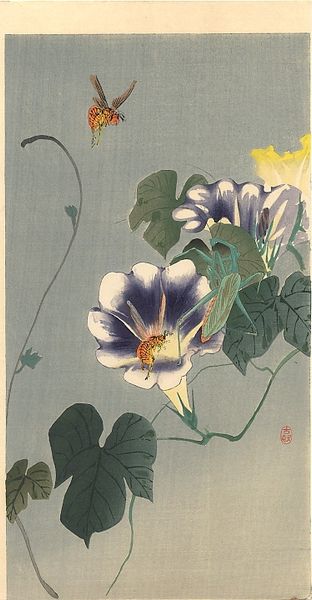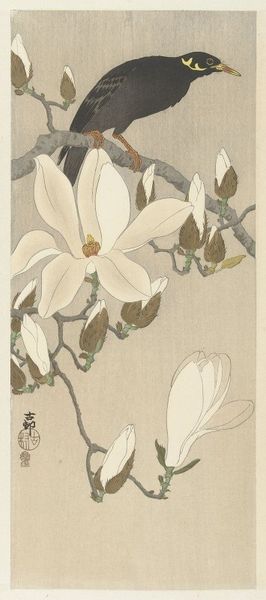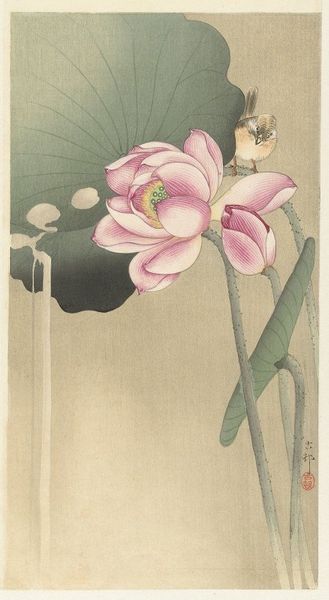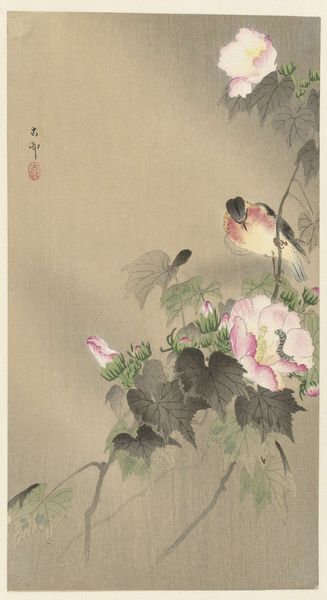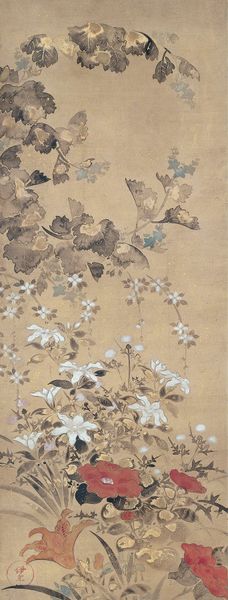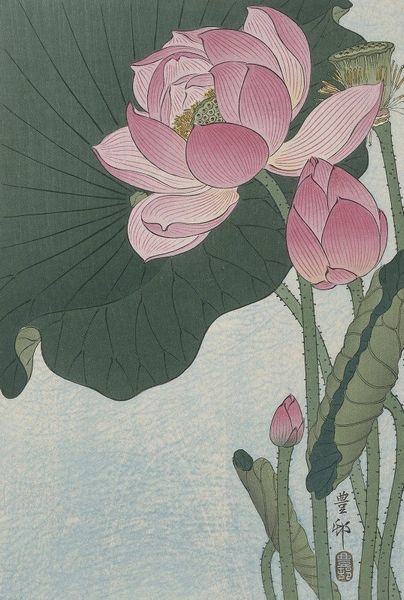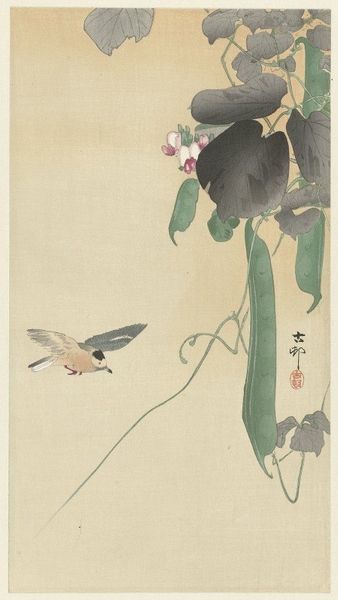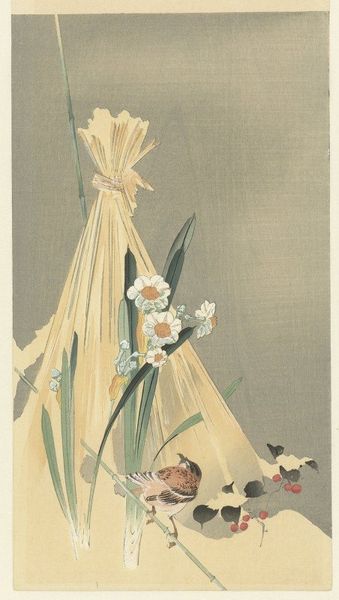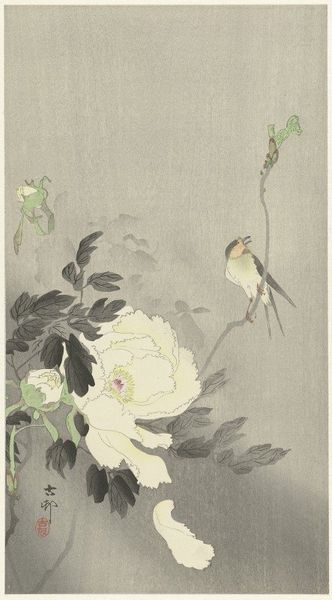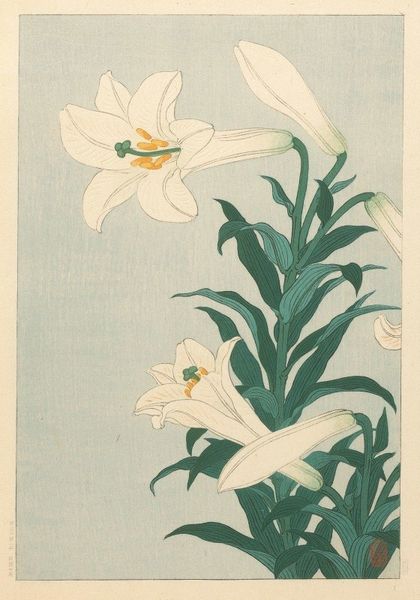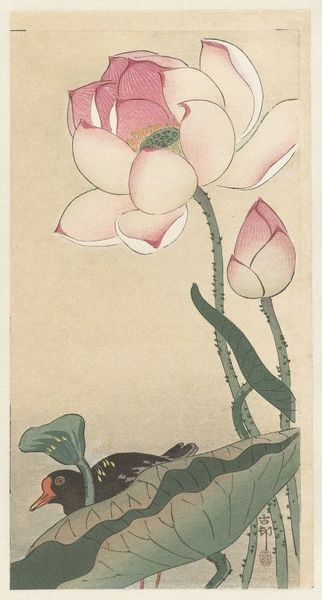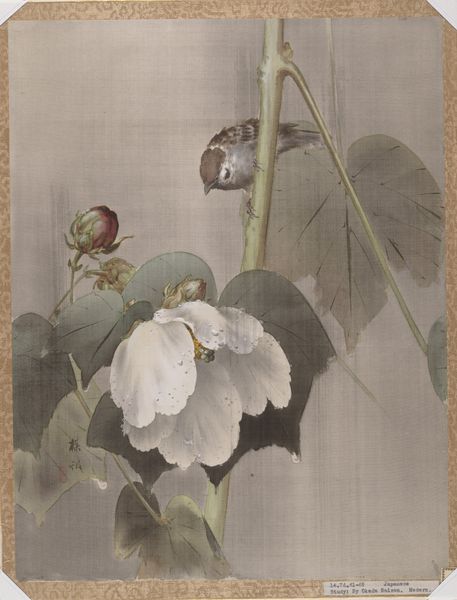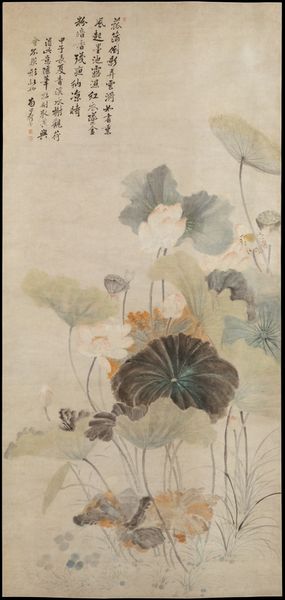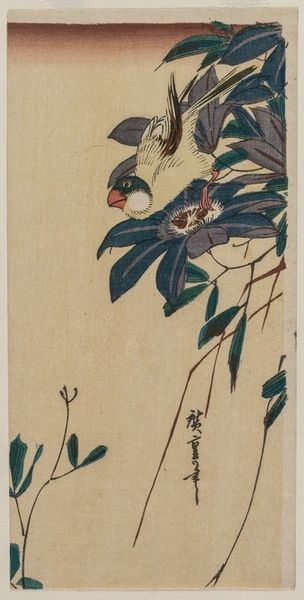
Copyright: Public Domain: Artvee
Editor: This is "Insects at Bindweed," a woodblock print with watercolor, made sometime between 1900 and 1930 by Ohara Koson. I'm struck by how delicate the image feels; it’s very serene. What can you tell me about this piece? Curator: Well, this print exemplifies Shin-Hanga, or “New Print” movement, which revitalized traditional Ukiyo-e prints by incorporating Western influences. How do you think that impacted its reception? Editor: I suppose Western audiences might have found it more accessible or appealing with those influences… a fusion, perhaps? Curator: Exactly. Think about the historical context: Japan was modernizing rapidly during this period. The Shin-Hanga movement, fueled by publishers like Watanabe Shōzaburō, actively courted Western markets. It promoted images of Japan to the world. Do you see any evidence of Western influence in the style or technique used here? Editor: Hmm, maybe the realism in depicting the insects? Also the perspective isn't as flat as I would expect. Curator: Yes, you see both there. Beyond just aesthetics, it's worth noting that works like these played a crucial role in shaping Western perceptions of Japan during a period of significant cultural exchange and, let's not forget, political tension. Editor: It's fascinating how an artwork can be both beautiful and carry such weight in terms of cultural politics! It really encourages a deeper view of something you would walk past without a thought! Curator: Indeed! And remembering this interplay between art and socio-political forces really changes how we understand its value.
Comments
No comments
Be the first to comment and join the conversation on the ultimate creative platform.
